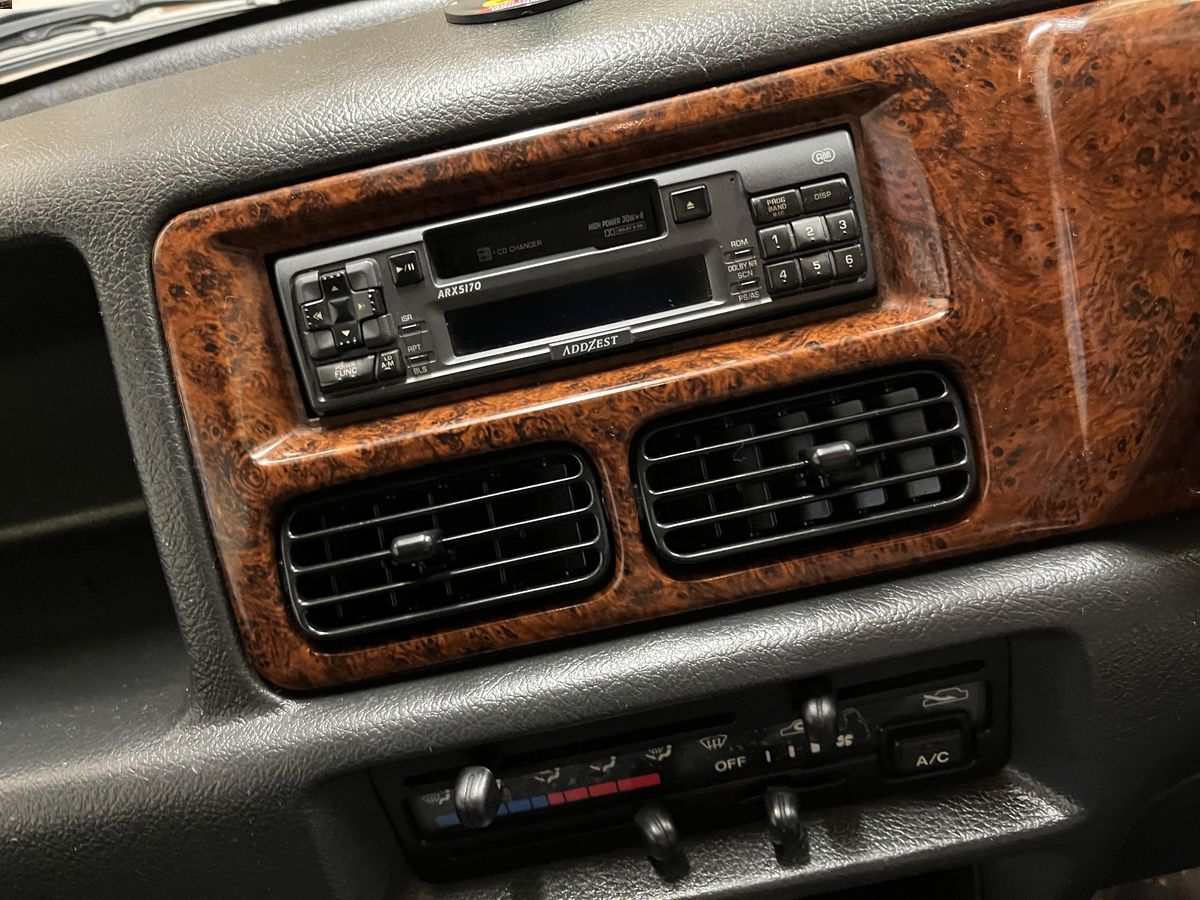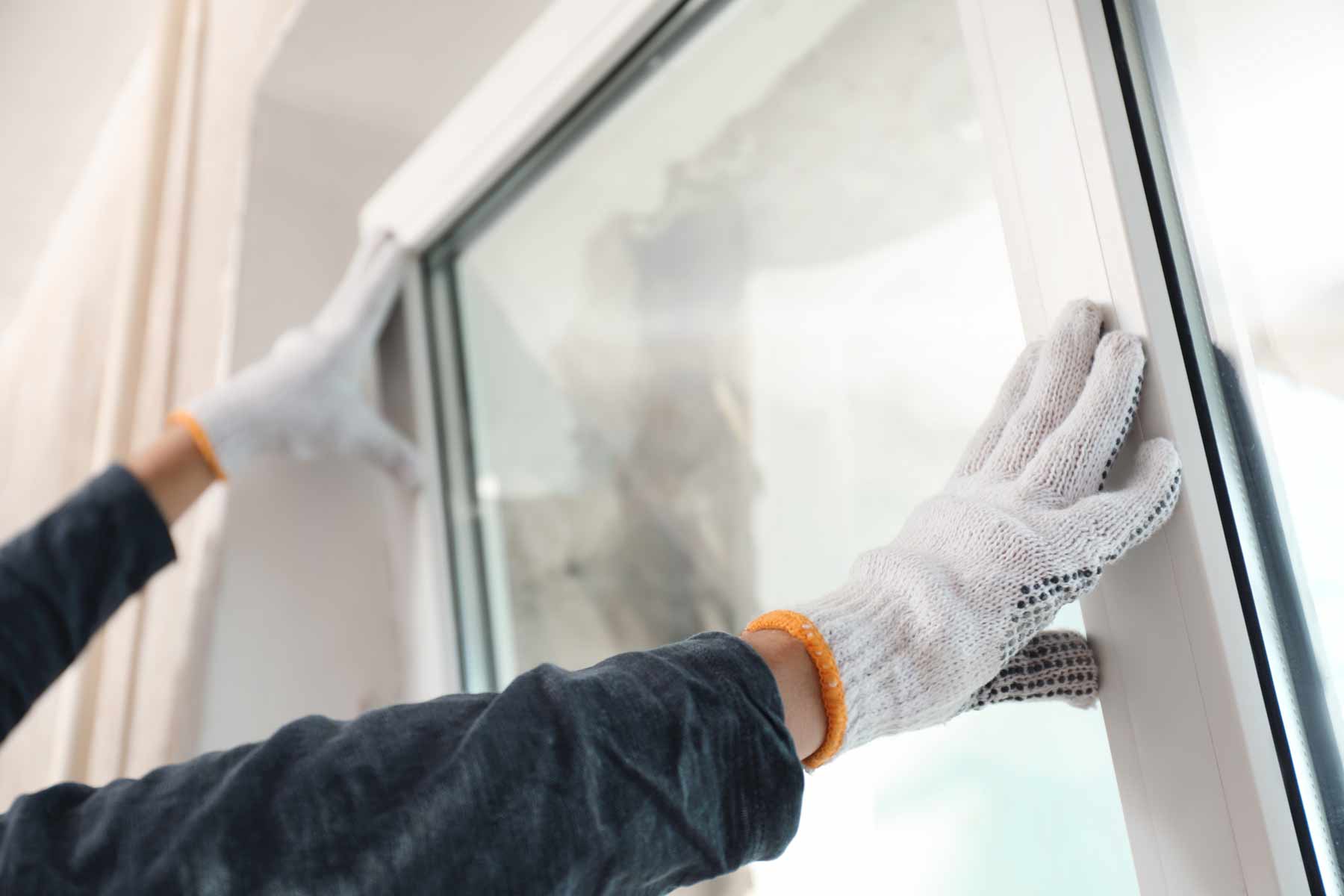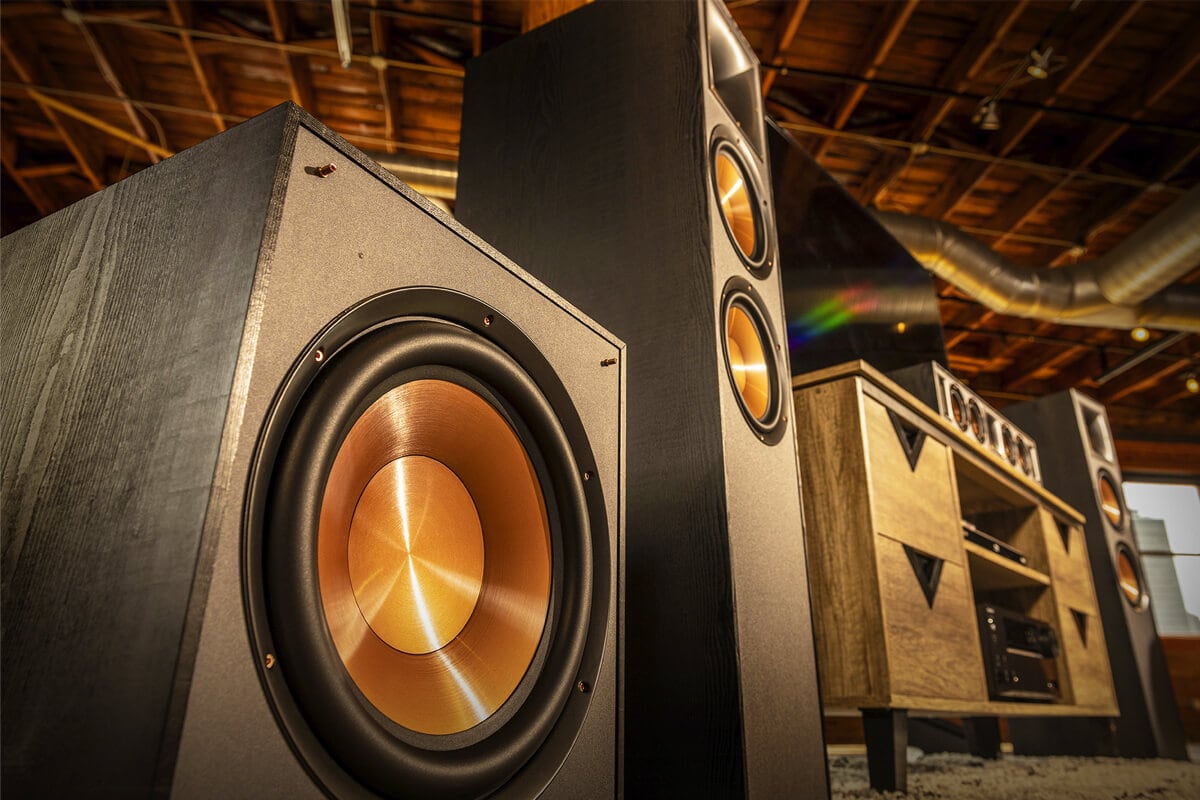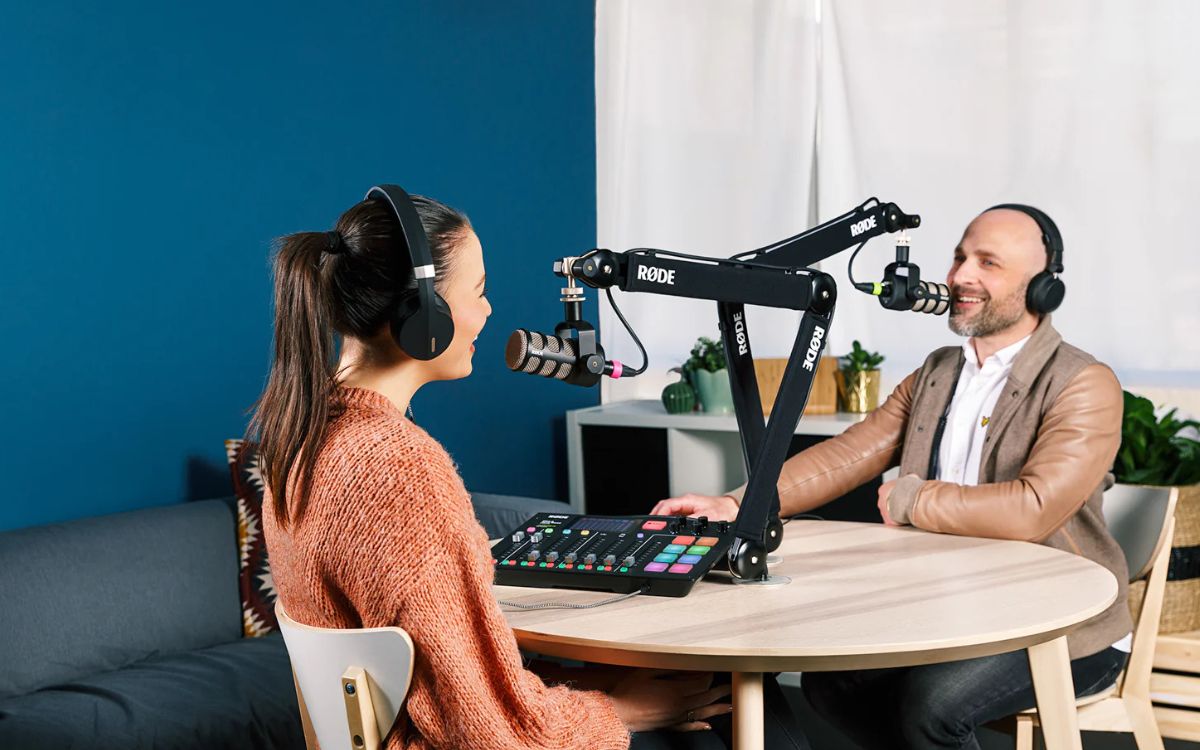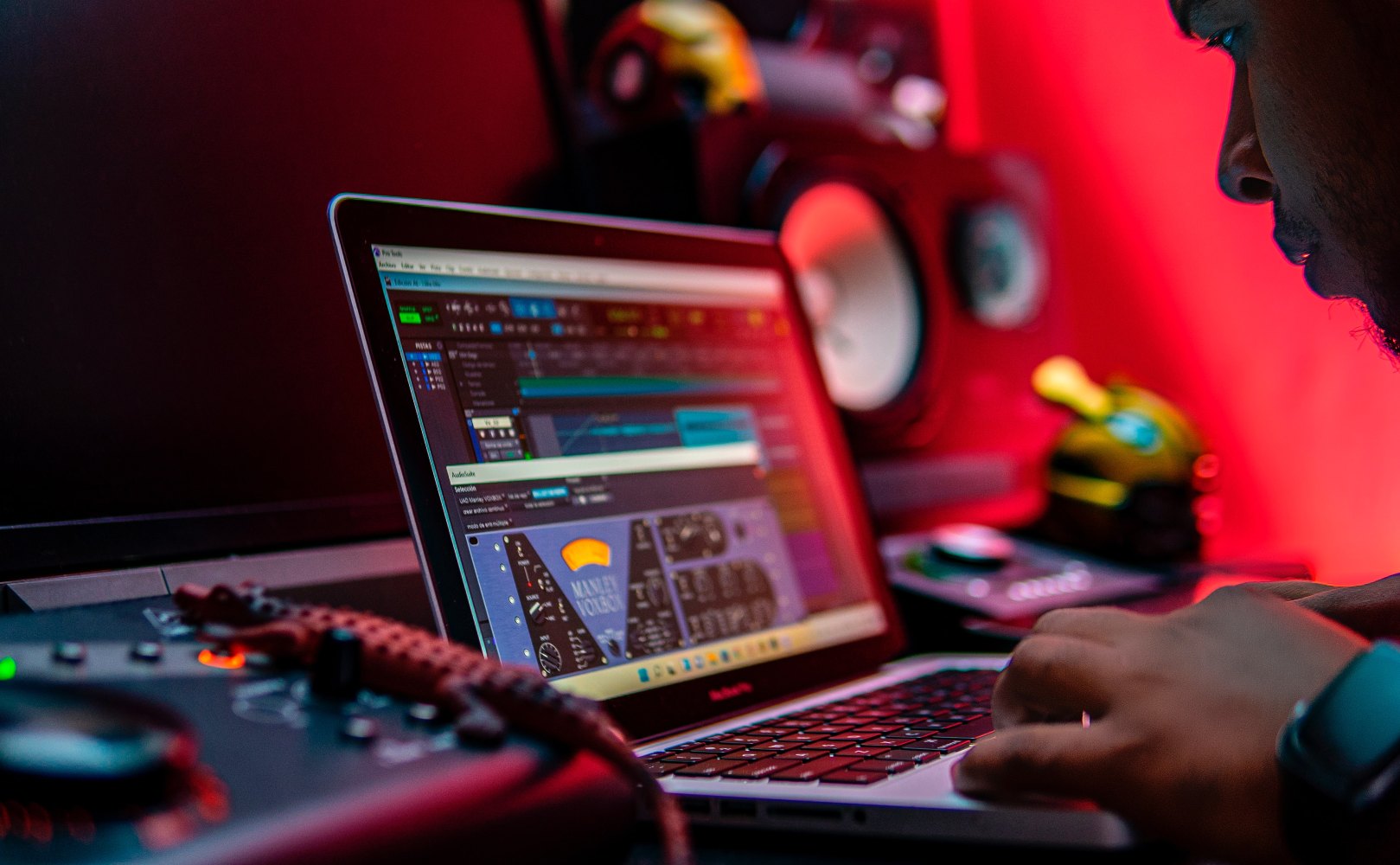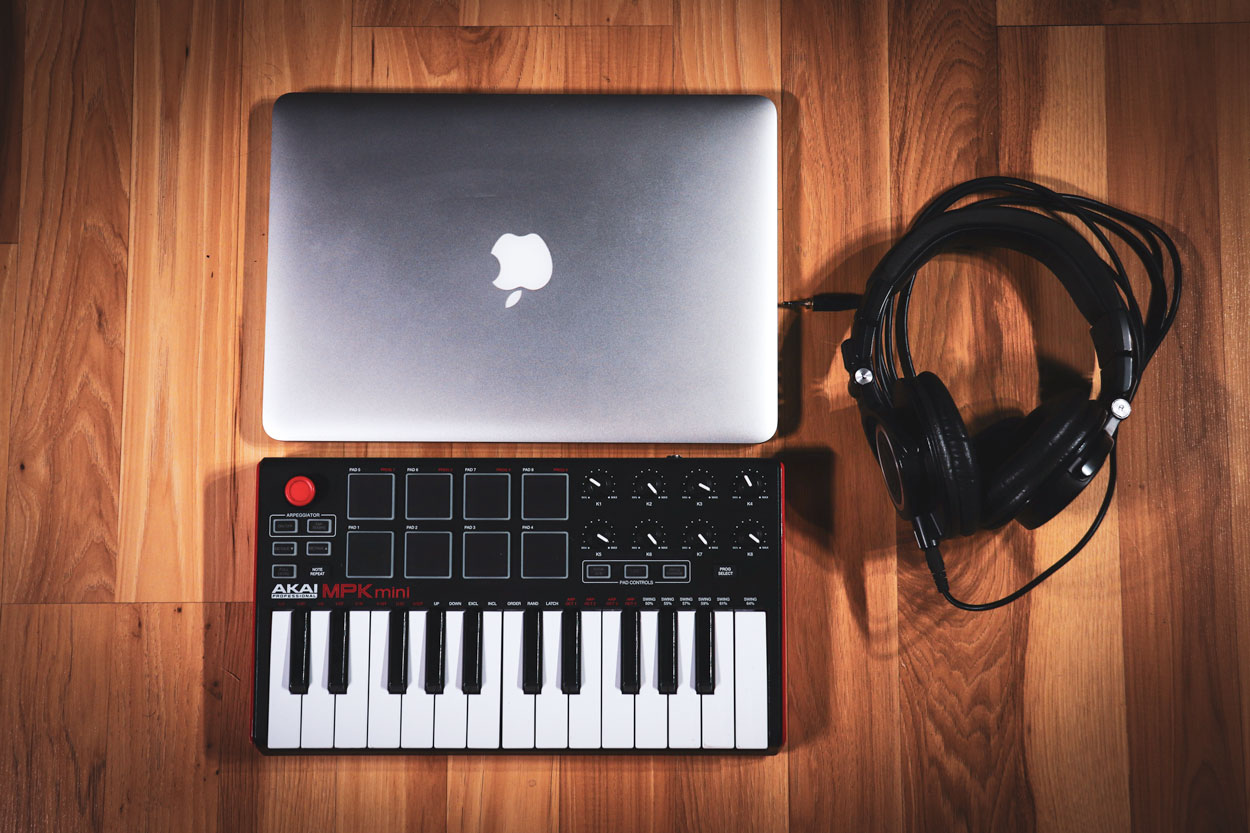Home>Production & Technology>Soundproofing>How Much Soundproofing Do I Need In New York


Soundproofing
How Much Soundproofing Do I Need In New York
Published: January 27, 2024
Looking for soundproofing solutions in New York? Discover how much soundproofing is needed to create a peaceful and quiet environment in your space.
(Many of the links in this article redirect to a specific reviewed product. Your purchase of these products through affiliate links helps to generate commission for AudioLover.com, at no extra cost. Learn more)
Table of Contents
- Introduction
- Factors to Consider for Soundproofing in New York
- Level of Soundproofing Required for Residential Spaces
- Level of Soundproofing Required for Commercial Spaces
- Level of Soundproofing Required for Office Spaces
- Level of Soundproofing Required for Educational Institutions
- Level of Soundproofing Required for Healthcare Facilities
- Level of Soundproofing Required for Hospitality Establishments
- Level of Soundproofing Required for Entertainment Venues
- Level of Soundproofing Required for Industrial Spaces
- Conclusion
Introduction
Living in a bustling city like New York can be an exciting and vibrant experience. However, amidst the constant hustle and bustle, it is important to find moments of peace and tranquility in your home or place of business. This is where soundproofing comes into play.
Noise pollution is a common problem in urban areas, and New York is no exception. From the sounds of traffic and construction to the echoes of sirens and subway trains, the city can be a cacophony of noise that invades your personal space. Soundproofing is the solution to creating a quiet oasis within the chaos.
Whether you’re a homeowner looking to block out the sounds of the city or a business owner aiming to maintain a peaceful environment for your employees and customers, understanding the level of soundproofing required is essential. Different spaces have different soundproofing needs, depending on factors such as location, purpose, and individual preferences.
In this article, we will explore the various factors to consider when determining the level of soundproofing required in different spaces throughout New York. From residential properties to commercial establishments, office spaces to educational institutions, healthcare facilities to hospitality establishments, and even entertainment venues and industrial spaces, we’ll cover it all.
So, if you’re wondering how much soundproofing you need in New York, read on to discover the answers that will help you create a serene and tranquil environment in the midst of the city that never sleeps.
Factors to Consider for Soundproofing in New York
When it comes to soundproofing in New York, there are several factors to consider to ensure optimal results. These factors will help determine the level of soundproofing required for your specific space. Let’s take a closer look at what you need to consider:
- Location: The location of your property plays a significant role in determining the amount of noise you’ll encounter. If you’re in a busy area with heavy traffic or close to construction sites, you’ll likely require a higher level of soundproofing compared to quieter neighborhoods.
- Noise Source: Identifying the primary sources of noise is crucial in determining the level of soundproofing required. Is it traffic noise, neighbors, or nearby establishments? Understanding the origin of the noise will help in finding effective soundproofing solutions.
- Sound Transmission Class (STC) Rating: The STC rating measures a material’s ability to reduce sound transmission. Higher STC ratings indicate better soundproofing capabilities. Consider the STC rating of walls, floors, and windows when planning your soundproofing strategy.
- Airborne and Impact Noise: Different types of noise require different soundproofing methods. Airborne noise, such as voices or music, can be reduced with sound-absorbing materials and insulation. Impact noise, like footsteps or moving furniture, may require solutions that isolate and dampen vibrations.
- Building Regulations: Make sure to research and comply with building codes and regulations in New York. Depending on the type of space, there may be specific requirements for soundproofing to ensure a comfortable environment for occupants and nearby neighbors.
- Budget: Consider your budget when planning your soundproofing project. Different methods and materials vary in cost, so it’s essential to find a balance between effectiveness and affordability.
- Personal Preferences: Everyone has different tolerance levels for noise. Evaluate your personal preferences and the level of quietness you desire. Some may prefer complete silence, while others may find a certain level of background noise acceptable.
By considering these factors, you can determine the most suitable soundproofing solutions for your specific needs. Whether it’s reducing noise from external sources or preventing sound from escaping your space, understanding these factors will set you on the right path to achieving a more peaceful and serene environment in New York.
Level of Soundproofing Required for Residential Spaces
Residential spaces in New York deserve to be havens of tranquility where residents can escape the hustle and bustle of the city. Achieving optimal soundproofing in your home is essential to create a peaceful and quiet environment. The level of soundproofing required will depend on several factors:
1. Building Structure: The construction of your building will play a significant role in determining the level of soundproofing required. Older buildings with thinner walls and insufficient insulation will likely require more extensive soundproofing measures compared to newer constructions with better acoustic properties.
2. Neighboring Noise: If you live in an apartment or a building with close proximity to neighbors, reducing noise transmission between units is crucial. Adding sound-absorbing materials to walls, floors, and ceilings can effectively block out unwanted noise from adjacent units.
3. Street Noise: New York’s busy streets can be a significant source of noise pollution. Double-glazed windows, weatherstripping, and acoustic curtains can help minimize external noise, creating a quieter and more peaceful living space.
4. Internal Noise Control: Effective soundproofing includes managing internal noise as well. Installing carpets or rugs, using sound-absorbing furniture, and placing acoustic panels on walls can all contribute to reducing echo and internal noise levels.
5. Bedrooms and Home Offices: Bedrooms and home offices are areas where peace and quiet are especially important. Soundproofing these spaces with specialized materials such as acoustic foam panels, resilient channel systems, and soundproof curtains can ensure a restful sleep or a productive work environment.
6. Personal Preference: The desired level of soundproofing can vary from person to person. Consider your tolerance for noise and your specific needs. Some individuals may require complete silence, while others may find a certain level of ambient noise relaxing.
By taking these factors into account, you can determine the level of soundproofing required for your residential space in New York. Whether you live in a high-rise apartment, a historic brownstone, or a suburban home, creating a quiet and peaceful environment will enhance your overall well-being and provide a sanctuary from the city’s noise.
Level of Soundproofing Required for Commercial Spaces
Commercial spaces in New York, such as offices, retail stores, and restaurants, require a different level of soundproofing compared to residential spaces. These environments often have higher foot traffic, increased noise from equipment, and the need to maintain privacy for employees and customers. Here are some factors to consider when determining the level of soundproofing required for commercial spaces:
1. Privacy and Confidentiality: In offices or meeting rooms, ensuring the privacy and confidentiality of conversations is vital. Soundproofing measures like sound-insulating partitions, acoustic panels, and soundmasking systems can help prevent confidential information from being overheard.
2. Noise from Equipment: Commercial spaces often house equipment that generates noise, such as HVAC systems, kitchen appliances, or printing machines. Proper soundproofing is necessary to reduce the impact of these noises on productivity, employee well-being, and customer experience.
3. Customer Experience: In retail stores, restaurants, and entertainment venues, providing a pleasant and enjoyable customer experience is crucial. Soundproofing helps create a peaceful ambiance, allowing customers to enjoy their time without being overwhelmed by external noise or background chatter.
4. Open Office Settings: Open office layouts have become popular for fostering collaboration and communication. However, they can also create noise-related challenges. Strategic furniture placement, acoustic panels, and sound-absorbing materials can help control noise levels in these shared workspaces.
5. Shared Spaces: Restrooms, break rooms, and hallways are shared spaces that may require soundproofing to minimize noise disturbance. Adding acoustic wall panels, soundproof doors, and proper insulation can help maintain a quiet and comfortable environment for employees and visitors.
6. Compliance with Regulations: Depending on the type of commercial space, there may be specific regulations or building codes related to soundproofing. It is important to research and adhere to these guidelines to ensure a comfortable environment for both occupants and nearby businesses or residences.
By considering these factors, you can determine the level of soundproofing required for your commercial space in New York. Whether it’s a bustling office, a vibrant retail store, or a lively restaurant, implementing effective soundproofing measures will contribute to a more productive and pleasant work environment and enhance the overall customer experience.
Level of Soundproofing Required for Office Spaces
Office spaces in New York are buzzing hubs of activity, with employees working collaboratively, meetings taking place, and phone calls being made. To ensure productivity and a comfortable work environment, soundproofing measures are crucial. Here are some factors to consider when determining the level of soundproofing required for office spaces:
1. Open Office Layout: Open office layouts are popular for promoting collaboration and communication. However, they can lead to increased noise levels and distractions. Strategic placement of furniture, installation of partitions, and use of acoustic materials can help create individual workspaces and reduce noise transfer.
2. Private Offices and Meeting Rooms: Private offices and meeting rooms require a higher level of soundproofing for confidentiality and privacy. Sound-insulating walls, doors, and windows, along with sound-absorbing ceiling tiles and carpeting, can help create a conducive environment for confidential conversations and focused work.
3. HVAC and Electrical Systems: Office spaces often house HVAC units and electrical systems that generate noise. Proper soundproofing techniques, such as isolation mounts for equipment and acoustic insulation for ductwork, can minimize the impact of these noises on employee concentration and well-being.
4. Workplace Distractions: External noises, such as construction work or street traffic, can interrupt employee focus and productivity. Soundproofing windows, using sound-absorbing materials on walls, and implementing soundmasking systems can help mitigate these distractions and create a quieter work environment.
5. Acoustic Design: Incorporating acoustic design elements into the office space can enhance sound control. This includes the use of sound-absorbing materials on walls, ceilings, and floors, as well as strategic placement of furniture and sound diffusers to regulate sound reflection and reduce echo.
6. Employee Wellness: Excessive noise in the office can contribute to stress and fatigue among employees, negatively impacting their well-being and productivity. Providing a quiet and calm work environment through soundproofing measures can improve employee satisfaction and overall morale.
By considering these factors, you can determine the appropriate level of soundproofing required for your office space in New York. Implementing effective soundproofing techniques will not only enhance productivity but also create a more comfortable and enjoyable work environment for employees.
Level of Soundproofing Required for Educational Institutions
Educational institutions in New York, including schools, colleges, and universities, have unique soundproofing needs. Creating an environment that promotes effective teaching and learning while minimizing distractions is crucial. Here are some factors to consider when determining the level of soundproofing required for educational institutions:
1. Classroom Settings: Classrooms are the core learning spaces in educational institutions. Soundproofing measures such as acoustic ceiling tiles, sound-absorbing wall panels, and carpeting can help reduce noise levels and improve speech intelligibility, ensuring students can focus and understand their teachers.
2. Hallways and Common Areas: Noise generated in hallways and common areas can disrupt classroom activities. Using sound-absorbing materials on walls, installing acoustical doors, and managing foot traffic can help control noise transmission and maintain a quieter environment.
3. Auditoriums and Performance Spaces: Auditoriums and performance spaces in educational institutions host various events, including concerts, presentations, and theatrical performances. Implementing soundproofing techniques such as acoustic curtains, specialized wall panels, and sound-isolating structures can enhance the audio experience for both performers and the audience.
4. Laboratories and Technical Spaces: Laboratories and technical spaces often house equipment that generates noise. Proper soundproofing is necessary to prevent noise pollution from interfering with experiments, research, and other activities requiring focused attention. Sound-isolating rooms and vibration-dampening materials can help achieve this.
5. Study Areas and Libraries: Quiet study areas and libraries are essential for students seeking a peaceful environment to concentrate and study. Incorporating sound-absorbing materials on walls, ceilings, and furniture, along with efficient HVAC systems that minimize noise, can create a conducive space for individuals to focus and learn.
6. Exterior Noise Control: Educational institutions located in busy areas may encounter external noise from traffic or neighboring establishments. Soundproof windows, weatherstripping, and landscaping techniques can help reduce the impact of external noise and create a more tranquil environment inside the campus.
By considering these factors, educational institutions can determine the appropriate level of soundproofing required in their specific settings. Implementing effective soundproofing measures will help create an environment conducive to learning, minimize distractions, and improve the overall educational experience for students and teachers in New York.
Level of Soundproofing Required for Healthcare Facilities
Healthcare facilities in New York, including hospitals, clinics, and medical offices, require a high level of soundproofing to ensure patient privacy, confidentiality, and a conducive healing environment. Here are some factors to consider when determining the level of soundproofing required for healthcare facilities:
1. Patient Privacy and Confidentiality: Maintaining patient privacy is of utmost importance in healthcare settings. Soundproofing measures such as sound-insulating walls, doors, and curtains can help prevent conversations and medical procedures from being overheard, ensuring patient confidentiality.
2. Noise Control in Patient Rooms: Patient rooms should be quiet and peaceful to facilitate recovery and rest. Soundproof windows, acoustic ceiling tiles, and sound-absorbing materials on walls can minimize external noise and create a calm environment for patients to heal.
3. Operating Rooms and Procedure Rooms: Surgical and procedure rooms require a high level of soundproofing to minimize distractions and maintain a focused environment for medical professionals. Soundproof walls, doors, and specialized ventilation systems can help control noise and ensure optimal conditions for medical procedures.
4. Waiting Areas and Reception: Waiting areas and reception spaces can become noisy, especially during peak hours. Implementing sound-absorbing materials on walls, ceilings, and furniture, as well as proper space planning, can help reduce noise levels and create a more comfortable environment for patients and visitors.
5. Diagnostic and Imaging Facilities: Soundproofing is crucial in diagnostic and imaging facilities to ensure accurate results and minimize interference from external noise. Specialized acoustic materials, equipment enclosures, and vibration isolation can help create a controlled environment for precise medical imaging and diagnostic procedures.
6. Staff Work Areas: Healthcare facilities have various staff work areas, such as nurses’ stations and administrative offices. Soundproofing measures such as privacy panels, sound-absorbing partitions, and sound masking systems can help reduce noise levels, ensuring a focused and productive work environment for healthcare professionals.
By considering these factors, healthcare facilities can determine the appropriate level of soundproofing required to provide a quiet and healing environment for patients, while maintaining privacy and productivity for staff. Effective soundproofing measures will contribute to a positive patient experience and enhance the overall quality of care in New York healthcare facilities.
Level of Soundproofing Required for Hospitality Establishments
Hospitality establishments in New York, including hotels, resorts, and restaurants, aim to provide a comfortable and enjoyable experience for guests. Soundproofing plays a vital role in creating a peaceful ambiance and ensuring guest satisfaction. Here are some factors to consider when determining the level of soundproofing required for hospitality establishments:
1. Guest Room Comfort: Guest rooms should offer a serene environment for a restful stay. Implementing soundproofing measures such as sound-absorbing materials, double-glazed windows, and acoustic door seals can minimize external noise and create a tranquil atmosphere for guests.
2. Privacy in Shared Spaces: Public areas such as lobbies, lounges, and conference rooms often require soundproofing to maintain privacy and prevent noise disturbances. Sound-absorbing ceiling panels, acoustic wall coverings, and properly installed doors can help control noise transfer and ensure a peaceful atmosphere for guests.
3. Restaurant and Dining Areas: Restaurants and dining areas need to strike a balance between a vibrant atmosphere and noise control. Sound-absorbing elements like acoustic panels, curtains, and carpeting can help reduce noise levels, allowing guests to enjoy their meals and conversations without being hindered by excessive noise.
4. Banquet Halls and Event Spaces: Hospitality establishments often host weddings, conferences, and other events in their banquet halls or event spaces. Proper soundproofing techniques, including acoustic wall treatments, ceiling panels, and sound-isolating partitions, are essential to ensure privacy, minimize noise bleed, and create an optimal environment for events.
5. Fitness Areas and Spa Facilities: Fitness centers and spa facilities should provide a peaceful and relaxing environment. Soundproofing gymnasium floors, using sound-absorbing materials on walls, and incorporating sound masking systems in spa areas can help create a calm and inviting space for guests to unwind and rejuvenate.
6. Back-of-House Areas: Soundproofing measures are also important in back-of-house areas such as kitchens, laundry rooms, and staff offices. Proper insulation, sound-absorbing materials, and equipment enclosures can help minimize noise disruption and create a more efficient and comfortable work environment for staff.
By considering these factors, hospitality establishments can determine the appropriate level of soundproofing required to provide a memorable and enjoyable experience for guests. Effective soundproofing solutions will enhance the overall comfort and satisfaction of visitors in New York’s hospitality industry.
Level of Soundproofing Required for Entertainment Venues
Entertainment venues in New York, including theaters, concert halls, and nightclubs, have unique soundproofing requirements to ensure optimal sound quality, minimize noise disturbance, and comply with local regulations. Here are some factors to consider when determining the level of soundproofing required for entertainment venues:
1. Auditorium and Performance Spaces: The main focus of entertainment venues is to provide exceptional sound quality during performances. Soundproofing measures such as specialized acoustic wall panels, stage curtains, and sound-isolating structures are necessary to enhance acoustics and prevent sound leakage.
2. Control of External Noise: Entertainment venues often face external noise challenges from nearby traffic or other establishments. Soundproof windows, solid doors, and proper insulation can help minimize external noise infiltration, allowing audiences to fully immerse themselves in the performance.
3. Noise Control for Neighbors: Maintaining a good relationship with neighboring properties is important. Proper soundproofing methods, including acoustic barriers, sound-isolating walls, and vibration-dampening technologies, can prevent noise complaints and potential conflicts with neighboring residents or businesses.
4. Noise Management for Club Environments: Nightclubs and music venues require intensive soundproofing to control noise within the space. Using acoustic foam panels, bass traps, and sound-absorbing materials on the walls and ceiling can help reduce sound propagation, preventing excessive bass vibrations and echoes.
5. Sound Isolation for Multiple Event Spaces: Venues with multiple event spaces that run simultaneously need effective sound isolation. Installing soundproof walls, properly sealing doors, and utilizing soundproof curtains can ensure that each event remains separate and undisturbed by noise from other areas.
6. Compliance with Noise Regulations: Entertainment venues must comply with local noise regulations to avoid fines or closure. It is important to research and adhere to the specific noise guidelines set by local authorities to ensure that sound levels are within acceptable limits.
By considering these factors, entertainment venues can determine the appropriate level of soundproofing required to create immersive experiences for audiences, maintain good relationships with neighbors, and meet regulatory requirements. Effective soundproofing solutions will enhance the overall sound quality and prevent noise disturbances in New York’s vibrant entertainment scene.
Level of Soundproofing Required for Industrial Spaces
Industrial spaces in New York, such as factories, manufacturing plants, and warehouses, often generate high levels of noise due to machinery, equipment, and production processes. Implementing soundproofing measures is essential to ensure a safe working environment, protect employee health, and comply with regulations. Here are some factors to consider when determining the level of soundproofing required for industrial spaces:
1. Noise Level Assessment: Conduct a comprehensive noise level assessment to identify the sources and intensity of noise within the industrial space. This assessment will help determine the specific soundproofing measures needed for different areas and equipment.
2. Machinery and Equipment: Machinery and equipment are major contributors to noise in industrial spaces. Applying soundproof enclosures or barriers around noisy equipment, installing vibration isolation mounts, and utilizing sound-absorbing materials can effectively reduce noise levels and protect employees’ hearing.
3. Soundproofing Building Structure: Enhancing the acoustic properties of the building structure is crucial. Incorporating sound-absorbing materials into walls, ceilings, and floors, using double-glazed windows, and improving door seals can help reduce noise transmission both within and outside the industrial facility.
4. Sound Masking: In certain areas where complete elimination of noise is difficult, sound masking systems can be employed. These systems emit a low-level, non-distracting background noise, which helps to mask and minimize the impact of other ambient noise, making the overall soundscape more comfortable for workers.
5. Employee Protection: Noise exposure in industrial spaces can have adverse effects on employee health and well-being. Implementing personal protective equipment (PPE) such as earplugs or earmuffs, creating designated quiet areas, and providing education and training regarding noise hazards can help protect employees from excessive noise levels.
6. Compliance with Regulations: Industrial spaces must comply with local noise regulations to ensure the well-being of employees and nearby communities. It is important to understand and adhere to specific noise limits and standards set by regulatory authorities to avoid penalties or fines.
By considering these factors, industrial space owners and operators can determine the appropriate level of soundproofing required to create a safe and comfortable workplace environment. Effective soundproofing measures will not only protect employee health but also contribute to increased productivity and a more harmonious relationship with the surrounding community in New York.
Conclusion
When it comes to soundproofing in New York, understanding the level of soundproofing required for different spaces is essential. Whether it’s a residential property, commercial establishment, office space, educational institution, healthcare facility, hospitality establishment, entertainment venue, or industrial space, each has its unique soundproofing needs.
Factors such as location, noise sources, building structure, and personal preferences contribute to determining the level of soundproofing required. By considering these factors and implementing the appropriate soundproofing measures, one can create a tranquil and peaceful environment in the midst of the city’s bustling and noisy atmosphere.
Residential spaces require soundproofing to block out external noise, maintain privacy, and provide a peaceful haven for residents. Commercial spaces and office settings benefit from soundproofing to ensure confidentiality, reduce distractions, and improve productivity. Educational institutions require soundproofing to create conducive learning environments and minimize noise disruptions. Healthcare facilities prioritize soundproofing to protect patient privacy, ensure a quiet healing environment, and maintain confidentiality. Hospitality establishments strive to provide guests with a peaceful and enjoyable experience, and soundproofing plays a crucial role in achieving this goal. Entertainment venues require soundproofing to enhance sound quality, minimize noise disturbances, and comply with local regulations. Finally, industrial spaces need soundproofing to protect employee health, comply with noise regulations, and create a safe working environment.
By understanding the specific soundproofing needs of each space and implementing the appropriate measures, individuals and businesses in New York can create environments that are conducive to productivity, well-being, and satisfaction. From controlling external noise to minimizing noise transmission between rooms, there are various techniques and materials available to achieve the desired level of soundproofing.
In conclusion, soundproofing is a critical aspect of creating comfortable and peaceful spaces in the bustling city of New York. Whether you’re a homeowner, business owner, educator, healthcare professional, hospitality provider, entertainer, or industrial worker, considering the factors that determine the level of soundproofing required will help you make informed decisions and create environments that enhance the quality of life for yourself, employees, students, patients, guests, and workers.



